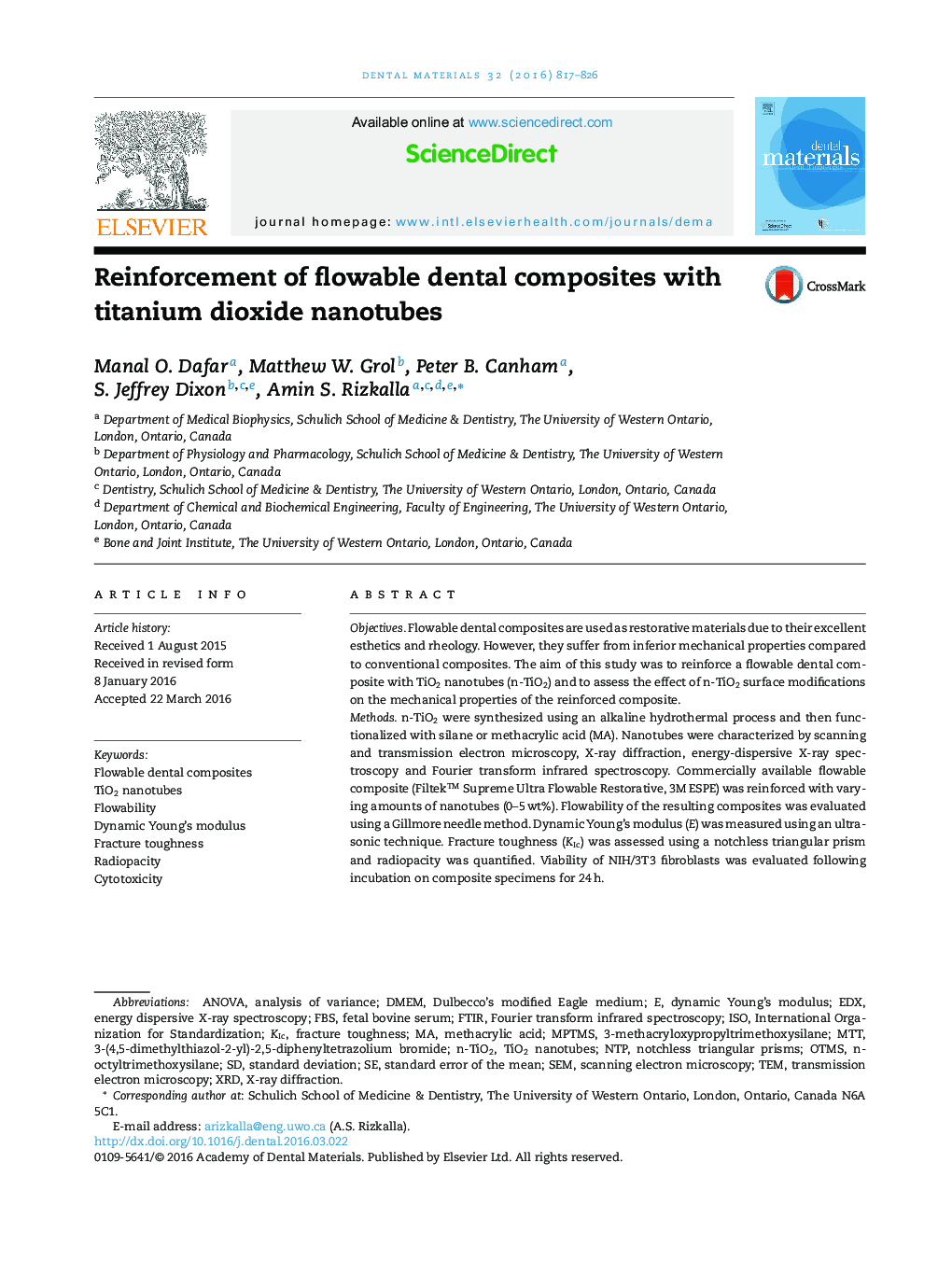| کد مقاله | کد نشریه | سال انتشار | مقاله انگلیسی | نسخه تمام متن |
|---|---|---|---|---|
| 1420392 | 986360 | 2016 | 10 صفحه PDF | دانلود رایگان |
• TiO2 nanotubes were synthesized using an alkaline hydrothermal process.
• Nanotubes were functionalized and used to reinforce a flowable dental composite.
• Reinforced composites exhibited superior mechanical properties.
• Reinforcement had little effect on flowability, radiopacity or cytotoxicity.
• Nanotube-reinforced composites are promising materials for dental restorations.
ObjectivesFlowable dental composites are used as restorative materials due to their excellent esthetics and rheology. However, they suffer from inferior mechanical properties compared to conventional composites. The aim of this study was to reinforce a flowable dental composite with TiO2 nanotubes (n-TiO2) and to assess the effect of n-TiO2 surface modifications on the mechanical properties of the reinforced composite.Methodsn-TiO2 were synthesized using an alkaline hydrothermal process and then functionalized with silane or methacrylic acid (MA). Nanotubes were characterized by scanning and transmission electron microscopy, X-ray diffraction, energy-dispersive X-ray spectroscopy and Fourier transform infrared spectroscopy. Commercially available flowable composite (Filtek™ Supreme Ultra Flowable Restorative, 3M ESPE) was reinforced with varying amounts of nanotubes (0–5 wt%). Flowability of the resulting composites was evaluated using a Gillmore needle method. Dynamic Young's modulus (E) was measured using an ultrasonic technique. Fracture toughness (KIc) was assessed using a notchless triangular prism and radiopacity was quantified. Viability of NIH/3T3 fibroblasts was evaluated following incubation on composite specimens for 24 h.ResultsElectron microscopy revealed a tubular morphology of n-TiO2. All reinforced composites exhibited significantly greater values of E than unreinforced composite. Composites reinforced with 3 wt% n-TiO2 functionalized with MA exhibited the greatest values of E and KIc. Cytotoxicity assays revealed that reinforced composites were biocompatible. Taken together, flowable composites reinforced with n-TiO2 exhibited mechanical properties superior to those of unreinforced composite, with minimal effects on flowability and radiopacity.Significancen-TiO2-reinforced flowable composites are promising materials for use in dental restorations.
Journal: Dental Materials - Volume 32, Issue 6, June 2016, Pages 817–826
